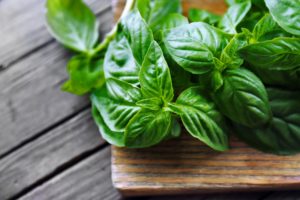
Throughout human history, people all over the world have found countless uses for plants. Present in every biome on Earth, they are as useful as they are varied. For one, they are responsible for both generating and purifying the oxygen required for life to exist on land. Beyond this, some can be eaten for nourishment, while others can be used as medicine. Since they play such an important role in the human experience, it makes sense that many cultures have viewed specific plants as sacred herbs over the years.
One does not need to be a member of a particular religion to appreciate all that the flora of the world can provide. Sacred plants and magic herbs are much more commonplace than you might think. If you enjoy herbal teas for their health properties, then you already know a bit about how sacred herbs come into everyday life. Take a look at these popular varieties and learn more about how they can improve your physical, mental, and spiritual wellness.
Basil
To kick things off, it can be a good idea to start with a very familiar herb: basil. Used as a spice to flavor meals and found in gardens and on windowsills everywhere, basil has long been considered an important plant. While you might be used to adding fresh basil to a pizza, you may not know that basil is considered to have anti-inflammatory properties. Inflammation in and around the heart muscles can lead to cardiac troubles, meaning adding more basil to your diet may be a smart move for the future of your heart.
A number of people also believe that basil is an adaptogen. This means that it has a somewhat calming effect by regulating the hormones that cause stress. Researchers and healers have also stated that basil can improve a person’s mood. While lowering stress hormones, basil is said to also stimulate the neurotransmitters that lead to the production of serotonin and other uplifting hormones.
Ginger
Another plant you’re likely to already have in your kitchen, ginger root has a number of restorative properties that have led it to being considered sacred by many. When you’re looking to add a real kick to a dish, ginger is a good choice. Similarly, it can be a solid option when your stomach is feeling a bit upset. Once upon a time, sailors were said to chew on ginger when they were getting seasick. Now, people still use ginger when they’re suffering from nausea, indigestion, and even morning sickness.
People have been using the root to treat ill tummies for a long while, and research seems to confirm these beliefs. Like basil, ginger also has anti-inflammatory properties. Many people use the spice in meals or drink a cup of ginger tea when their muscles feel sore. You might not experience a direct feeling of relief, but some researchers believe that regular ginger intake may slow or stop the progression of muscle pain over the course of time.
Yarrow
A plant you’re less likely to have lying about your home is yarrow. Known also as bloodwort and milfoil, it has long been considered sacred for what it can do for the spirit. Unlike basil and ginger, which are meant to be consumed in meals, yarrow has a different use. By smashing it into a poultice and applying it to the skin, many believe it will provide the courage to face a daunting task.
Sacred herbs can be found all over the planet and have served countless purposes over the history of the human race. Take time to learn more about these plants and their uses, and see if you can incorporate more into your daily routine.

